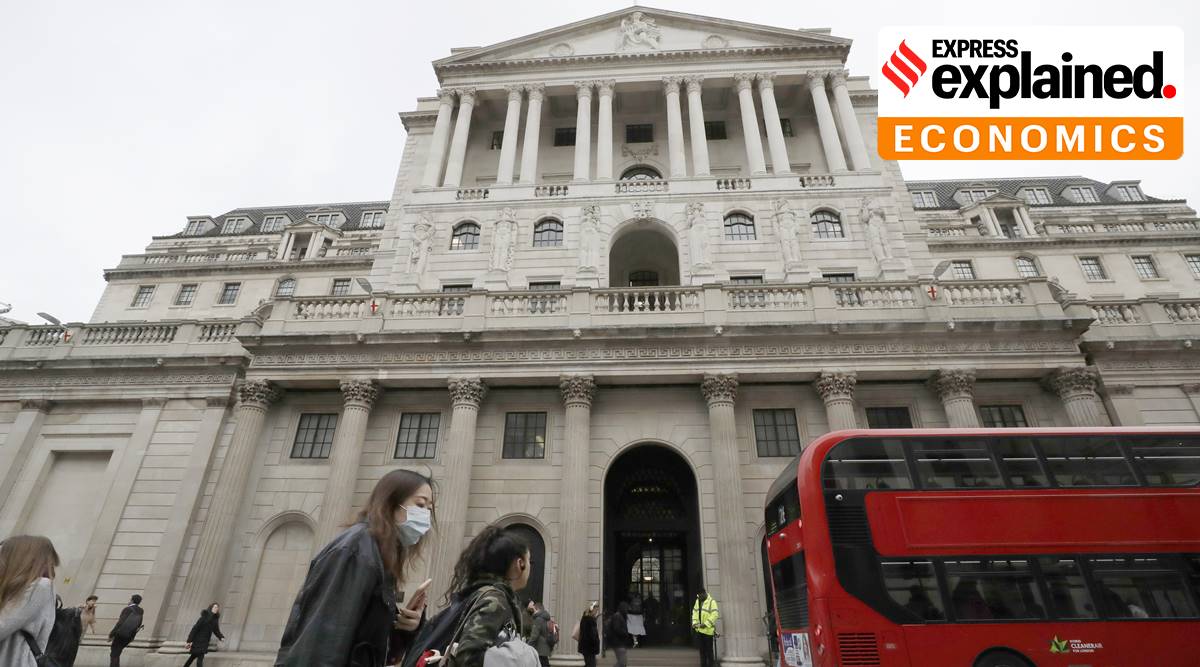
[ad_1]
 FILE – In this Wednesday, March 11, 2020 file photo, pedestrians wearing face masks pass the Bank of England in London. The U.K. economy has officially fallen into a recession after official figures showed it contracting by a record 20.4% in the second quarter as a result of lockdown measures put in place to counter the coronavirus pandemic. (AP Photo/Matt Dunham, File)
FILE – In this Wednesday, March 11, 2020 file photo, pedestrians wearing face masks pass the Bank of England in London. The U.K. economy has officially fallen into a recession after official figures showed it contracting by a record 20.4% in the second quarter as a result of lockdown measures put in place to counter the coronavirus pandemic. (AP Photo/Matt Dunham, File)
The UK released data on Wednesday that showed its economic output shrank by 20.4 per cent in the second quarter of 2020, pushing the country into the deepest recession recorded by any major global economy so far. This slump in GDP numbers in the April-June period is the worst on record and comes in the wake of a 2.2 per cent contraction recorded by the British economy in the March quarter. With the latest GDP print, the country has technically entered a recession.
What is a recession?
When the economy contracts for two quarters in a row (or six months), this change is classified as a recession. The term denotes a business cycle contraction, when there is a general decline in economic activity and occurs when there is a widespread drop in spending (an adverse demand shock). When a country’s economy is healthy, it grows over time and its GDP — gross domestic product, or the value of the goods and services it produces — increases.
The last time a number of countries entered a recessive phase was when the global financial crisis broke in 2007. A recession can become a depression if it lasts long enough, like in the late 1920s.
Why are the UK’s numbers so bad?
The UK’s GDP print marks the worst performance in the second quarter in Europe, ahead of Spain (-18.5%) and France (-13.8%). The country — which already has the highest death toll in Europe from the virus — seems to be paying for being late in imposing lockdown restrictions, as compared to its neighbours such as Spain and France. The British economy also has a heavier reliance on the services sector as compared to other European countries. Like the UK, other countries that are more services focussed have suffered. Singapore’s shrank almost 43 per cent in the second quarter, official data showed. The blow is hitting hardest in countries where the pandemic has been the most severe and where there is heavy reliance on global trade, tourism, commodity exports, and external financing.
Also from Explained: Trump’s proposed travel rules for US citizens and green card holders
In the June quarter, the US economy too shrank by 32.9 per cent – a bigger loss than any decline on record, and projections are that the showing by America would be worse in the September quarter — ensuring that it enters a recession too. The big exception seems to be China’s GDP, which swung back sharply into the black in the April-June quarter, driven by a bounceback in manufacturing output and a public spending boost after a negative print in the March quarter, helping it effectively sidesteps a technical recession.
What are the forecasts for the global economy?
According to World Bank forecasts, the global economy will shrink by 5.2 per cent this year — representing the deepest recession since the Second World War. It expects the largest fraction of economies reporting declines in per capita output on account of the current crisis since 1870, the Bank said in its June 2020 Global Economic Prospects. The US economy is forecast to contract 6.1 per cent this year, reflecting the disruptions associated with pandemic-control measures. Euro Area output is expected to shrink 9.1 per cent in 2020 as widespread outbreaks took a heavy toll on activity. Japan’s economy is anticipated to shrink 6.1 per cent as preventive measures have slowed economic activity.
Economic activity among advanced economies is anticipated to shrink 7 per cent in 2020 (calendar year) as domestic demand and supply, trade, and finance have been severely disrupted. Emerging market and developing economies or EMDEs are expected to shrink by 2.5 per cent this year, their first contraction as a group in at least 60 years. Per capita incomes are expected to decline by 3.6 per cent, which will tip millions of people into extreme poverty this year, the World Bank projections said.
What about India’s numbers?
India’s economic growth in the January-March quarter of 2019-20 expanded at its slowest pace in 40 quarters at 3.1 per cent, pulled down by the manufacturing and construction sectors (the data factored in the lockdown impact of only the last week of March). A contraction in output is projected for the June quarter, numbers for which the NSO will put out on August 31. In the current fiscal, India’s economy is projected to see a contraction of 4.5%-12.5% in GDP.
📣 The Indian Express is now on Telegram. Click here to join our channel (@indianexpress) and stay updated with the latest headlines
For all the latest Explained News, download Indian Express App.
© The Indian Express (P) Ltd
[ad_2]
Source link